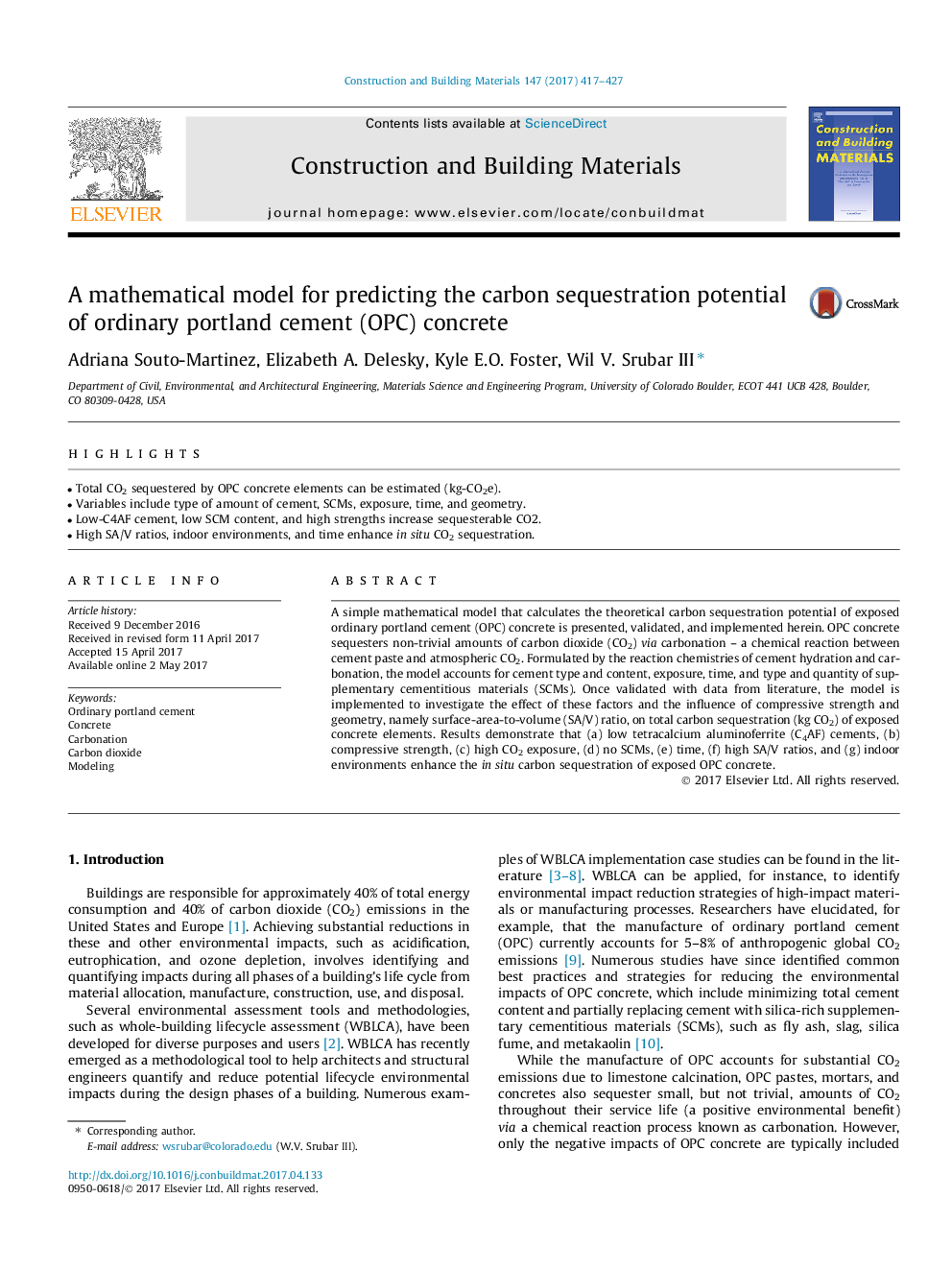| Article ID | Journal | Published Year | Pages | File Type |
|---|---|---|---|---|
| 6480541 | Construction and Building Materials | 2017 | 11 Pages |
â¢Total CO2 sequestered by OPC concrete elements can be estimated (kg-CO2e).â¢Variables include type of amount of cement, SCMs, exposure, time, and geometry.â¢Low-C4AF cement, low SCM content, and high strengths increase sequesterable CO2.â¢High SA/V ratios, indoor environments, and time enhance in situ CO2 sequestration.
A simple mathematical model that calculates the theoretical carbon sequestration potential of exposed ordinary portland cement (OPC) concrete is presented, validated, and implemented herein. OPC concrete sequesters non-trivial amounts of carbon dioxide (CO2) via carbonation - a chemical reaction between cement paste and atmospheric CO2. Formulated by the reaction chemistries of cement hydration and carbonation, the model accounts for cement type and content, exposure, time, and type and quantity of supplementary cementitious materials (SCMs). Once validated with data from literature, the model is implemented to investigate the effect of these factors and the influence of compressive strength and geometry, namely surface-area-to-volume (SA/V) ratio, on total carbon sequestration (kg CO2) of exposed concrete elements. Results demonstrate that (a) low tetracalcium aluminoferrite (C4AF) cements, (b) compressive strength, (c) high CO2 exposure, (d) no SCMs, (e) time, (f) high SA/V ratios, and (g) indoor environments enhance the in situ carbon sequestration of exposed OPC concrete.
